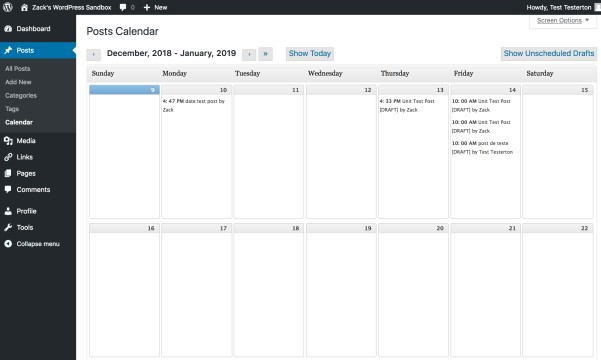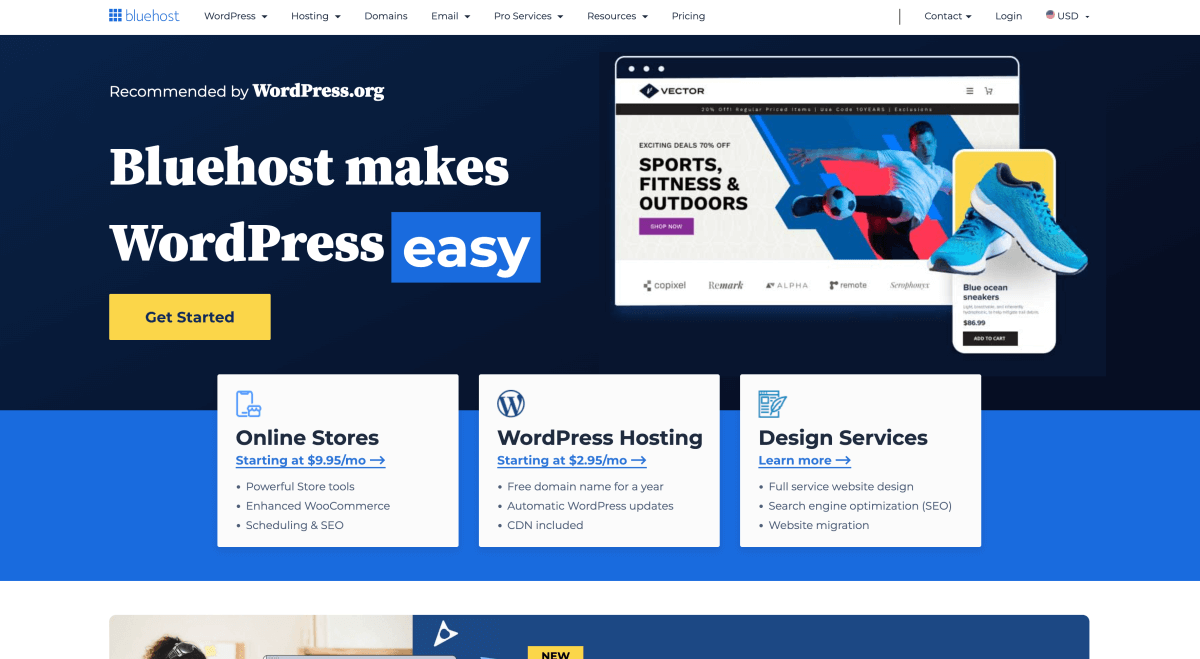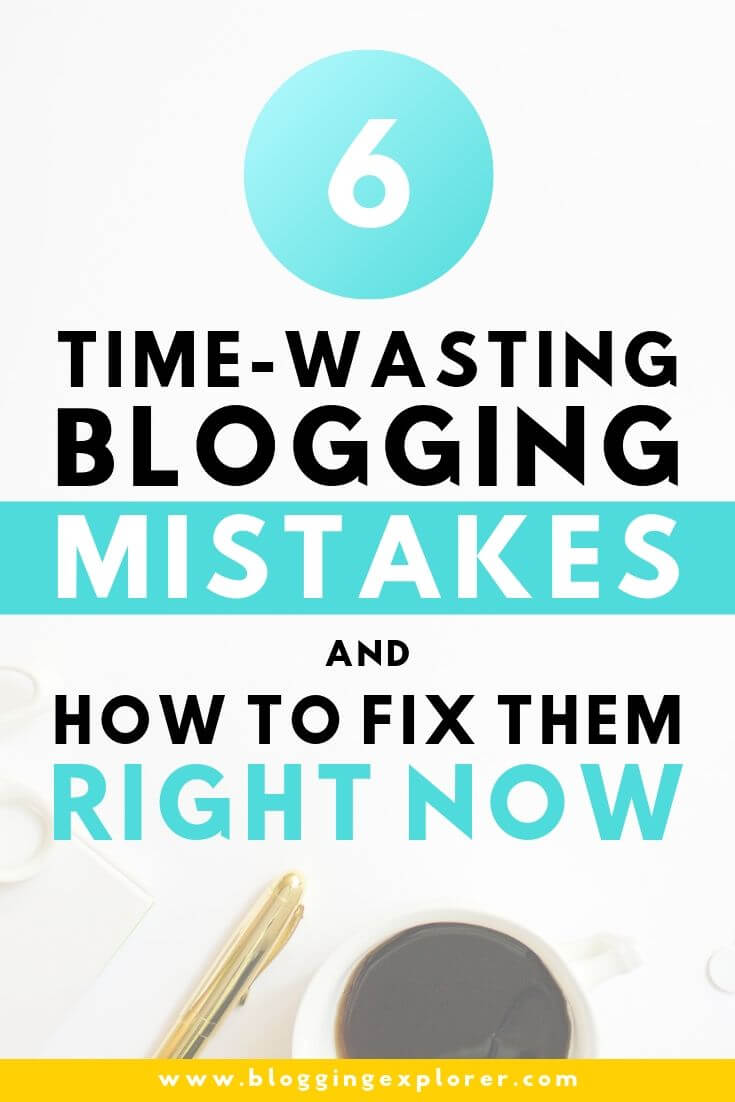When you start a blog from scratch, you have a lot on your plate. With all the new information to take in, blogging can often feel overwhelming and even daunting.
And when things get confusing, it’s easy to make a few massive blogging mistakes that cost you time and money.
To help you save tons of your valuable time, I’m sharing with you the worst blogging mistakes for beginners in this post. I’ll also give you easy, actionable steps to avoid them in the future.
By the end of this article, you will feel more confident with your blogging strategy and become more productive. I’ll show you exactly what NOT to do when you are trying to grow your blog traffic and make money from blogging.
Even if you haven’t launched your blog yet, you will walk away with a bunch of valuable blogging tips and tricks up your sleeve to maintain your focus and motivation.
Let’s jump right in!
Here are a few related articles for you to read:
- How To Start a Successful Blog? 6 Essential Steps For Blogging Beginners
- The Best WordPress Themes For Blogs (Free and Paid)
Please note: This post contains affiliate links to products I use, trust, and recommend. If you choose to purchase a helpful product using these links, I may receive a small commission for referring you – at no extra cost to you. These funds help me keep this blog up and running.
Easy-to-fix blogging mistakes can cost you tons of time and money
Since you are reading this right now, I know you are serious about becoming a successful blogger and making money online.
But I also know that you are most probably repeating some of the worst blogging mistakes I see bloggers make all the time.
Those mistakes and mishaps can cost you tons of time and money in the long run. And since I know you are busy as it is, you want to make sure you’re not making your life more difficult by screwing up your most fundamental blogging to-dos.
If you are new to blogging, you are definitely in the right place right now. Congrats for getting started!
Starting a blog is an enormous project and blogging itself is just like running any other business. With so many moving pieces to keep track of, we all make mistakes along the way.
But here’s the deal:
Most of the worst blogging mistakes are very common and easy to avoid. I see a bunch of bloggers repeat the same blogging mistakes over and over again. Yes, even the ones that can be prevented.
I don’t want you to be one of those bloggers!
Don’t repeat my blogging mistakes
You know what?
I was in your shoes not too long ago.
Just like you, I started my first blog with only a handful of skills and knowledge. And believe me – I made heaps of blogging mistakes along the way.
It’s all part of the game, and it’s impossible to avoid every little mistake as you go.
So, instead of feeling embarrassed or giving yourself a hard time because you had a little mishap, try to see it as a learning experience.
Every blogging mistake you do is an opportunity to improve your game and become better at managing your blog.
My dear mom always told me not to waste my precious time by repeating any mistakes I’d already done.
Thus, with every mistake I made, I learned a valuable lesson to apply to my next projects.
I’ve made all of the biggest blogging mistakes in this article myself, so I know very well how common they are.
Each point below will help you become more confident and productive as a blogger. You’ll learn how to avoid blogging mistakes in the first place.
And hey, should something go wrong, you’ll know how to fix it!
The worst blogging mistakes and how to fix them
Mistake #1: You don’t have a clear strategy
Blogging without a strategy is like running a marathon without knowing where the finish line is.
If you don’t know where the goal is, how could you ever know how to achieve it in the first place?
When you’re serious about starting a successful blog from scratch, I assume you’re willing to put a lot of effort into it. But how would you feel if all that work was for nothing?
A clear blog strategy is the most valuable asset for any blogger.
Knowing what you want and how you’re going to get it will help you stay focused.
Also, when you know what you want to achieve, you’ll find it easier to track your progress along the way.
Read also: 8 Tips for Starting a Successful Blog TODAY
Here’s what you should do
To build yourself a clear, robust blogging strategy, start by answering a few questions:
- Why do I want to be a blogger?
- Who’s my target audience?
- How can I create valuable, helpful content for my readers?
- What do I wish to achieve? Where do I want to be in 6 months? Or in 12 months? How about in 2 years?
Once you have an idea about your goals, it’s time to break them down into smaller bits. The easiest and most convenient way to do this is to set yourself a few measurable milestones for your journey.
Start by asking yourself: What do I want to do and learn in each month during my first year of blogging?
What I like to do when I start a new blog is this: I divide the first 12 months into 4 quarters of 3 months each. Then, I pick one main topic for each quarter, accompanied by one secondary topic.
Let’s see how this works in practice…
Blog strategy for 12 months: A simple example
My first quarter is usually all about planning and strategy, supported by a LOT of research. That’s how I create a content calendar for the first year, so I don’t have to spend time figuring out what to write about after I launch my blog.
The second quarter is usually more hands-on, with heaps of content creation. I focus on writing and generating valuable, evergreen content for my niche.
The third quarter is mostly about marketing. When the content is there, it’s time to generate massive traffic to my blog. Thus, I start promoting and marketing my blog on social networks.
Finally, the fourth quarter is all about monetization. By now, I have a nice amount of useful content for my readers. Also, I’m seeing increased traffic from social media and search engines. That means I can start employing a couple of different monetization methods to convert my traffic into income, step-by-step.
How do you create your blogging strategy? Let me know in the comments section, I’d love to hear your thoughts on this!
Mistake #2: You’re not consistent
When you start a blog, your head is probably packed with great ideas for your first blog posts.
But then, life gets in the way of things. You start losing your focus, bit by bit. And your motivation isn’t at the level where it used be.
And that’s perfectly normal! It’s OK to have other things on your mind than blogging 24/7. It just means you’re alive!
But trust me, once you get out of the habit of writing regularly, it’s easy to let a few weeks go by without publishing anything new. And before long, those weeks turn into months.
The more time goes by, the more difficult it’ll be to grab the bull by its horns and start writing again. Your blog will suffer a slow death as your readers notice your absence.
Here’s what you should do
Most often, bloggers lack consistency because they’re not sure what to write about. When the first posts are out there, many bloggers hit a brick wall. They simply run out of ideas.
Therefore, the key to producing new content consistently is PLANNING. When you start a blog, you MUST do so with a solid content plan.
So before you start writing blog posts, make sure you create a long-term outline for your content.
Brainstorm ideas, do keyword research, and find out what your target audience wants to see.
I always find it helpful to plan my content ahead in 12-month periods. However, it doesn’t mean I don’t cultivate any new ideas during that period. But I know I don’t HAVE to if I can’t.
That way, I save heaps of time not having to worry about my next post topics. I can use my time way more efficiently when I follow a robust content plan.
Related post: 5 Powerful Ways to Find Blog Post Ideas Quickly
Use an editorial calendar in WordPress
The easiest way to plan your content is to use an editorial calendar. Especially if you’re a visual person, you’ll love the structure it brings to blogging.
Planning your content with an editorial calendar also helps you maintain your focus. You know, when you have your blog categories thought out, it’s easy to create a “storyline” for each individual category.
For example, I have a category called “Start a Blog”. I know I want to publish 24 posts in that category in my first year. That’s 2 posts per month.
So I already know I can divide the journey of starting a blog into 24 pieces that make up a “story”. The next post builds on the previous one, so that there’s a consistent feel to the posts in that particular category.
You can create an editorial calendar on paper or using a spreadsheet, for example. Use whatever method works for you.
However, my recommendation is to use the Editorial Calendar plugin in WordPress. It’s 100% free and super easy to install and use. It also saves you time because you can see your calendar without leaving WordPress.

Mistake #3: You’re not editing your blog posts
Most beginner bloggers aren’t aware that you should spend more time editing your posts than writing them.
Editing gives you the chance to check that your content is cohesive, engaging, and valuable. An editing touch makes your blog posts much easier to read and follow.
In other words, your readers will enjoy consuming your content more, spending more time on your blog. That said, just remember that the time you spend on editing is worth more than the actual writing process!
But the thing is: Proper blog post editing takes heaps of time and attention to detail.
How do you make sure you don’t spend more time than necessary on editing?
Here’s what you should do
A rough rule on thumb is to divide your time for creating content into three phases:
- Research and planning (40%):
This is when you brainstorm ideas and develop outlines for your blog posts. - Writing and creation (20%):
This is the actual writing part when you’re typing like crazy! - Editing and marketing (40%):
The final, most crucial stage of creating content for your blog.
Yep, I’d say editing and marketing should take up about 40% of your time. No less!
And you’re probably asking yourself if 20% of your time is enough for the actual writing process?
Trust me, it is.
When you plan your content properly and eliminate all distractions during writing, you’ll write much faster.
Practical tips for editing your blog posts
So how should you go about editing your blog posts, then?
Here are a few helpful tips to get you started:
- Grammar and spelling:
Run your content through Grammarly first to correct any spelling and grammar mistakes. There’s a free version that’s super helpful, too. - Text formatting:
Improve readability by adding headings, white space, lists, and images. - Critical eye:
Don’t be afraid to delete some of the text you’ve written. Remember that every sentence should be valuable. If your readers don’t get value from a paragraph, delete it! - Tone and voice:
How’s the tone and style of your post? Read it out loud once more to see if the “mood” of the text is cohesive.
All in all, make sure you develop a healthy habit of editing your posts.
Don’t be afraid to use plenty of time on it in the beginning. When you’ve blogged for a few months, you’ll notice how your editing skills improve.
What are your best editing tips? Drop me a line in the comments below!
Related: 10 Instant Tips For Writing Better Blog Posts
Mistake #4: You’re not keeping your blog topic narrow
This one is something I can relate to 100%.
When you write a blog post, your thoughts tend to take a course of their own. While you write, you notice yourself thinking about how you could incorporate just a few more helpful points into your post.
However, a single blog post should only cover a super narrow topic in your niche.
After all, your readers find your blog interesting because your content is useful to them. They find your blog through social media or search engines while looking for information.
Hence, they’re only interested in getting an answer to a specific question on their mind.
Therefore, you should only solve one problem or answer a single question in each post.
The best way to maintain your focus while writing is to follow a clear content strategy. So, before you launch your blog, figure out what your long-term goals are.
Then, think about how you want to achieve those goals, step by step. That’s your blog strategy for the long run. Every blog post should take you one step closer to your long-term goals.
Here’s a practical solution
Here’s what I do:
When I start writing a new post (after careful planning!), I write down one question my post will answer. Just a single one.
I use the post title field for it, but I also like to write it down on a piece of paper. So whenever I gaze down at my keyboard, I’m reminded of the purpose of that post.
During the writing process, I always get new ideas and questions I could answer in the post, too. But unless they are easy and quick to answer, I don’t include them in the post.
Most often, each new question deserves an entire blog post of its own.
If you follow this strategy and maintain your focus, you’ll never run out of blog post ideas. Before you know it, you will have enough questions to answer for an entire year!
Related article: How to Find Blog Post Topics That Generate Traffic
Mistake #5: You’re not using a self-hosted blogging platform
Using a free blogging platform can be a costly mistake in the long run.
I’m talking about free platforms, such as:
- WordPress.com
- Blogger
- Tumblr
While all of them are great for hobby bloggers, you can’t build a solid, credible business with them.
With free blogging platforms, you have no control over your content or blog traffic.
Your blog could be shut down at any time if the company is sold, for instance. In other words, you could lose your content without a notice. Ouch!
Imagine having worked hundreds of hours to write valuable content, grow your blog traffic, and connect with your readers.
What would you do if all your work went down the drain?
If you want to start a successful blog and make money blogging, you MUST use a self-hosted blogging platform. Self-hosting means two things:
- You need to sign up for blog hosting:
Find a hosting provider and purchase a hosting plan. The provider will make your blog available to your readers by giving you space on their web server to store your blog on. - You need to register a blog domain name:
Find a suitable domain name (mine is bloggingexplorer.com) and register it. The easiest way to register a domain is to do it while you sign up for blog hosting.
Summing it up: blog hosting means making your blog available to the world. And a domain lets you pick the name you want for your blog.
If this sounds a tad technical, don’t worry. Signing up for blog hosting and registering a domain name for your blog only takes 30 minutes.
If you’re new to blogging, I recommend signing up with Bluehost.

What you should do:
If you’re serious about blogging (and I know you are!), set up your blog using a self-hosted platform. I always recommend using the WordPress.org blogging platform.
WordPress is a piece of software that allows you to manage your blog easily. You can install it with one click after you’ve signed up for a blog hosting plan with Bluehost, for example.
After that, you can log in to your WordPress dashboard and start writing your first blog post right away.
If you aren’t familiar with WordPress, make sure to check out my complete guide on WordPress.org vs. WordPress.com and what their differences are.
When you launch your blog, make sure you choose the best blog hosting in the market. That way, your blog is properly set up from the beginning and you won’t run into any technical problems that can cause your blog to crash altogether.
If you want a proper technical setup without any hassle or unnecessary blood pressure and frustration, join me and thousands of other happy bloggers on Bluehost.
Their setup is ridiculously easy and quick, and you only need a few minutes to get your blog up and running. Plus, their hosting plans are super affordable – great value for your money.
Whenever you’re ready to start, head over to my Step-by-Step Tutorial on How to Start a WordPress Blog on Bluehost in 30 Minutes. I’ll see you there!
Mistake #6: You don’t have realistic expectations
I know exactly how you feel when you start your first blog! Oh, the excitement!
You want to create a successful blog from scratch – as quickly as possible, right?
Now, let me tell you this: You will become successful. Your blog will take off at some point.
But achieving success with blogging will take time. Some bloggers see results and make money in their first weeks, while others have to wait for several months for the first dimes to start rolling in.
The key to success with blogging is to set yourself realistic expectations.
Trust me, you want to avoid any feelings of disappointment at all costs. And since the easiest way to feel disappointed is to set your goals way too high, let’s see what you should do to keep your motivation levels up.
How to set realistic expectations and goals:
The magic trick for staying on top of your game is to make sure you feel like you’re making progress. The easiest and most powerful way to do that is to make yourself a step-by-step plan.
Once you’ve found the perfect blog niche and you’re ready to get started, take a moment to build a solid blogging strategy.
Having a long-term plan is the best way to help you maintain your focus. Also, you’ll find it easier to stay motivated and driven in the long run.
- What are your long-term goals?
- How do you want to achieve your goals?
Just think about what you want to achieve in 3 months, 6 months, or in 2 years. Set yourself measurable milestones at regular intervals.
As the weeks and months go by, remember to sit down for a moment to see where you’re at.
- Are you achieving your short-term goals?
- Are you well on your way towards your long-term targets?
If you feel like your expectations are a tad ambitious, take them down a notch.
You’re not accountable to anyone except yourself, right? So, as your own boss, make sure you give yourself the freedom and flexibility you need to feel like you’re going forward.
Final thoughts: The biggest blogging mistakes for beginners and how to fix them
I hope you’re still with me! Did you find a few helpful tips in the points above? Anything you could apply to your own blogging journey? Let me know in the comments below!
When you start a blog from scratch, you can save hundreds of hours of work by using the tips in this article.
Just remember that your journey towards blogging success should start with careful planning. When you have a solid strategy to follow with clear steps towards your goals, you can’t fail. You always know how far you’ve come and what you should do next to get one step closer to your long-term goals.
So, if you haven’t already, start by finding the perfect blog niche.
When you’ve figured out what to blog about, head over to my step-by-step tutorial on how to start a WordPress blog in 30 minutes.
And when your blog is all set up, you can follow these steps to start creating amazing content for your readers.
Let me know how it goes!
Here are a few helpful articles you should read, too:
- 7 Critical Things You MUST Do Before Launching Your Blog
- 8 Simple Tips for Starting a Successful Blog Today
If you enjoyed this post about the worst blogging mistakes and how to solve them, drop me a line in the comments below!
P.S. If you found this article helpful, please share it with others! I appreciate your support!



